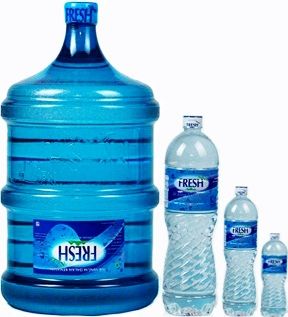February 22, 2011, 6:00 am
By Gregg Hennigan/SourceMedia Group News
A sign above the sink at St. Joseph's Catholic Church in Hills instructs people to "Always use water from the reverse osmosis tap for drinking, coffee, juice, etc," directing people to use the tap at the right. Water at the church and rectory has been contaminated by the chemical percholate. (Liz Martin/SourceMedia Group News)
HILLS — Shawna Simmons had never heard of perchlorate until she found out several years ago her home’s drinking water was contaminated with the chemical.
The government gave her six-person household, which includes four children, bottled water for a year, and then a water-treatment system they still use.
A more permanent fix may be on the way for the small town, located about 10 miles south of Iowa City, where private wells supply the drinking water to its fewer than 800 residents.
The U.S. Environmental Protection Agency recently announced that it would, for the first time, set a national standard for perchlorate in drinking water.
That will not apply to private water systems like in Hills, according to the EPA. But the EPA has worked on the Hills issue in the past, and the Iowa Department of Natural Resources has been waiting on the federal regulation. DNR officials met this month and decided on a course of action that will include pumping out the contamination.
Simmons’ home is one of more than 20 in Hills affected by an underground plume of perchlorate.
“I just kind of wanted to know what it was and what it did,” Simmons, 37, said of her reaction when first told of the problem.
Perchlorate is both a naturally occurring and man-made chemical that is used to produce rocket fuel, fireworks and explosives, according to the EPA. Hills’ contamination problem was discovered in 2003 and traced to the spot where an annual fireworks show was held.
Perchlorate can disrupt the thyroid’s ability to produce hormones that are critical to the development of fetuses and young children, according to the EPA.
The EPA says between 5 million and 17 million people nationwide may be served drinking water containing perchlorate. DNR spokesman Kevin Baskins said perchlorate is not a problem elsewhere in Iowa.
It could be three years before the national standard is set. The EPA currently has an advisory limit of 15 parts per billion. There are homes in Hills whose water measures at more than 100 ppb, before treatment.
The regulation of perchlorate is not without its critics. Media reports say the effort was met with resistance from the Defense Department and military contractors, and a group calling itself the Perchlorate Information Bureau — which includes defense contractors and a perchlorate manufacturer — contends there is no research that shows it adversely affects humans.
Hills has been searching for a solution to its contamination for the past several years. In 2007, voters shot down the idea of a municipal water system that would have cost an estimated $3 million to build and $86,000 a year to operate.
The plume is in the southwest corner of town and gradually moving east, toward more homes. It’s hard to measure, but it’s probably more than 2,000 feet long and 1,000 feet at its widest, said Mike Gannon, a geologist with the DNR’s Geological Survey Bureau. (See a DNR map of the plume’s location since 2007 at the end of the article.)
More than 20 properties have had reverse-osmosis systems installed. These are water-filtration systems that remove perchlorate from the water.
The cost falls to the city, which spent about $7,500 to install and maintain systems last year, according to City Clerk Bonnie Hanson. City attorney Benjamin Hayek did not provide a full bill for all the installed systems.
“It’s not huge numbers, but it’s big enough for a small town,” said Hills Mayor Russ Bailey.
St. Joseph's Catholic Church in Hills has a reverse osmosis treatment system in place for drinking water. (Liz Martin/SourceMedia Group News)
The church building and the rectory of St. Joseph’s Catholic Church have the systems and signs reminding visitors not to use the regular tap water. The Rev. Bill Kneemiller would favor a modern, municipal system, saying using wells is like living in the 1800s.
“It does seem like if you have a well, you’re at the mercy of what comes at the (water) level,” he said.
The properties affected by the perchlorate contamination have shallow wells, some only 15 feet deep, Bailey said.
This spring, the DNR is going to try to find the spot in the plume where the perchlorate concentration is highest, said Gannon. Then, in the early summer, the agency wants to pump out the contamination in a process known as de-watering.
They’ll need to be careful, though, because pumping too hard could dry up the wells, Gannon said.
The DNR also wants to install an interceptor well that would capture much of the contaminated water before it gets to the other wells, he said.
It’s not clear how much the pumping would cost and an interceptor well possibly could be done for $10,000, the DNR’s Baskins said. The agency and city need to discuss options and payment, he said.
Bailey said if those plans don’t work, he’ll try again to get support for a municipal water system.
“I’ll go down in flames with that one,” he said.


.jpg)
.jpg)


.jpg)
.jpg)
.jpg)
.jpg)
.jpg)
.jpg)
.jpg)

